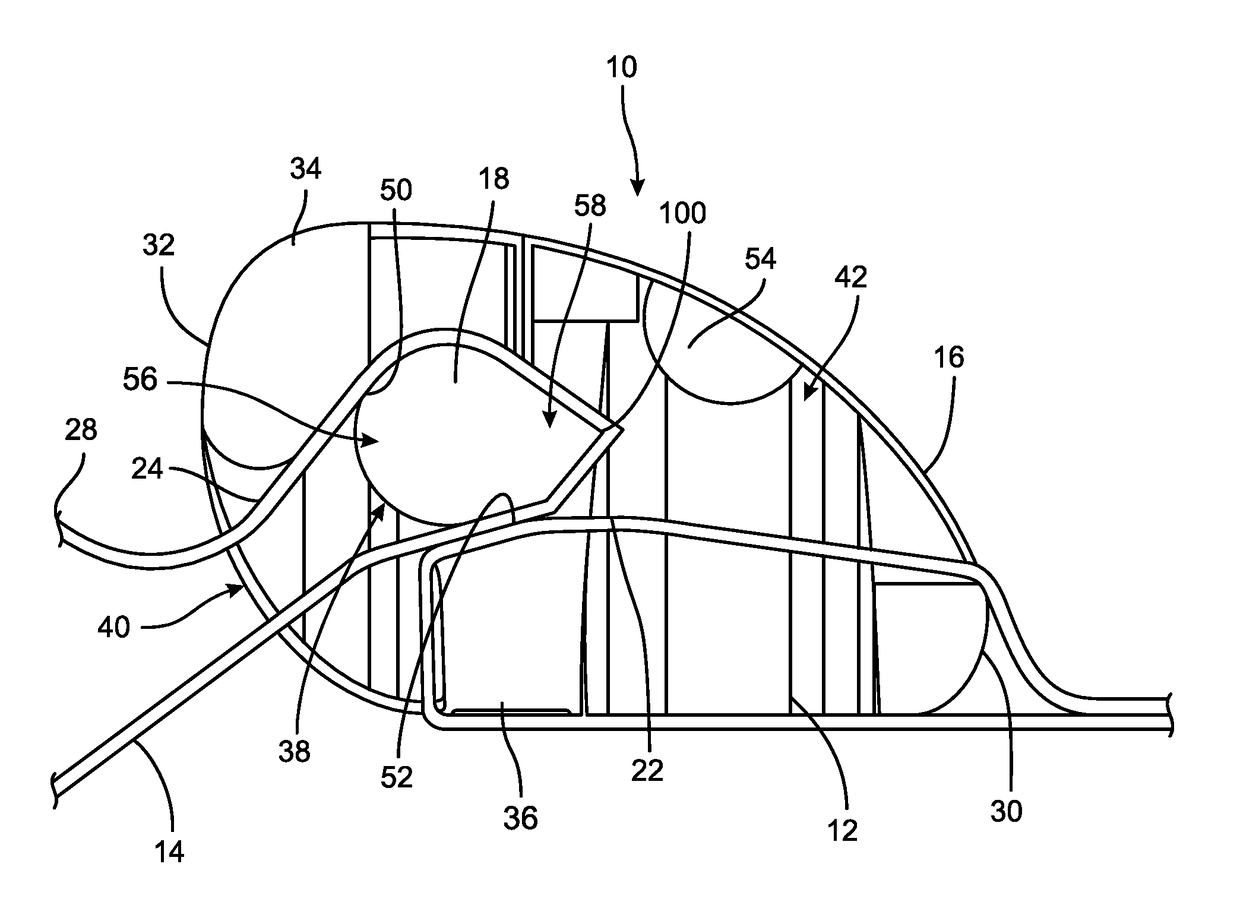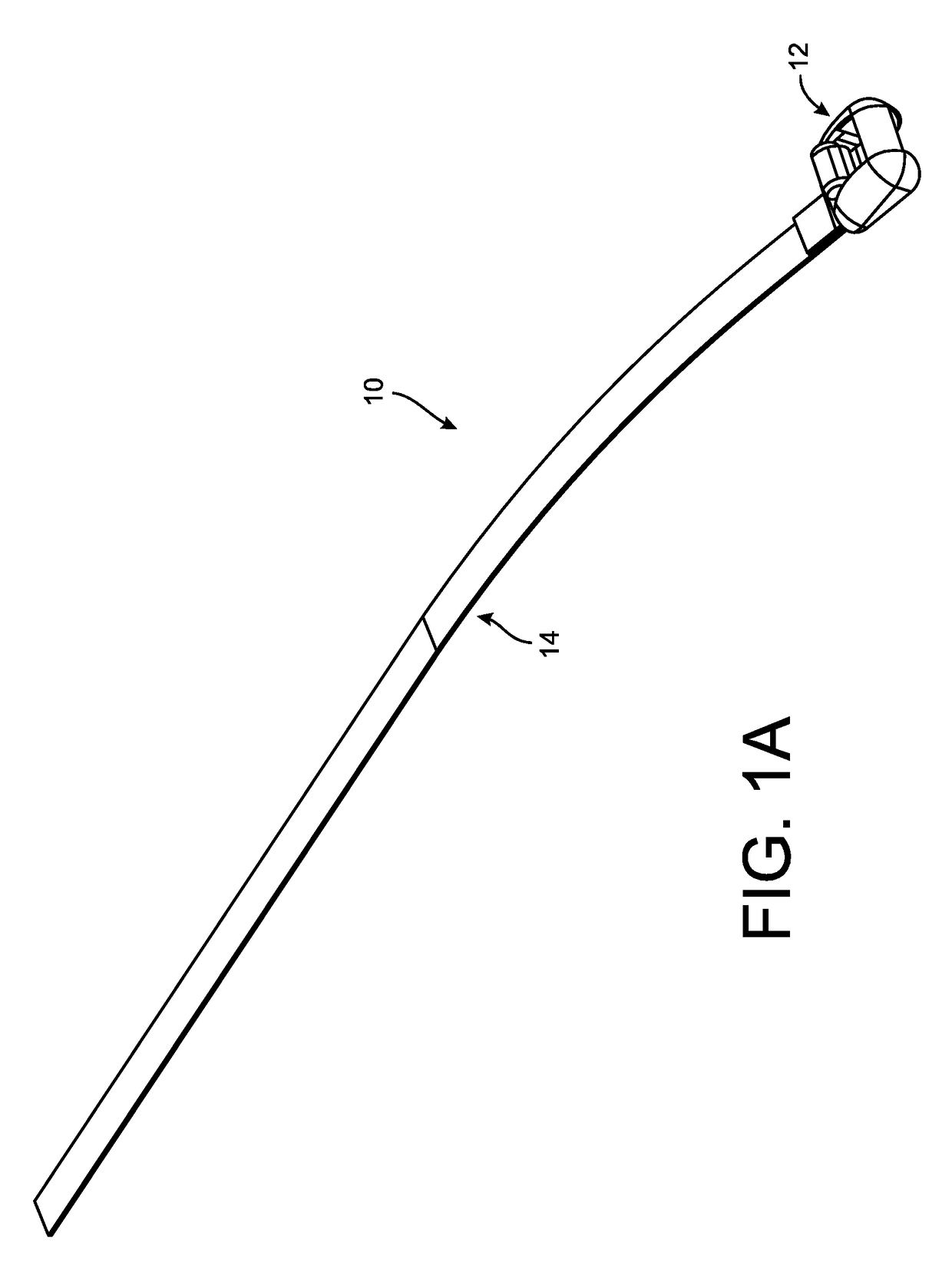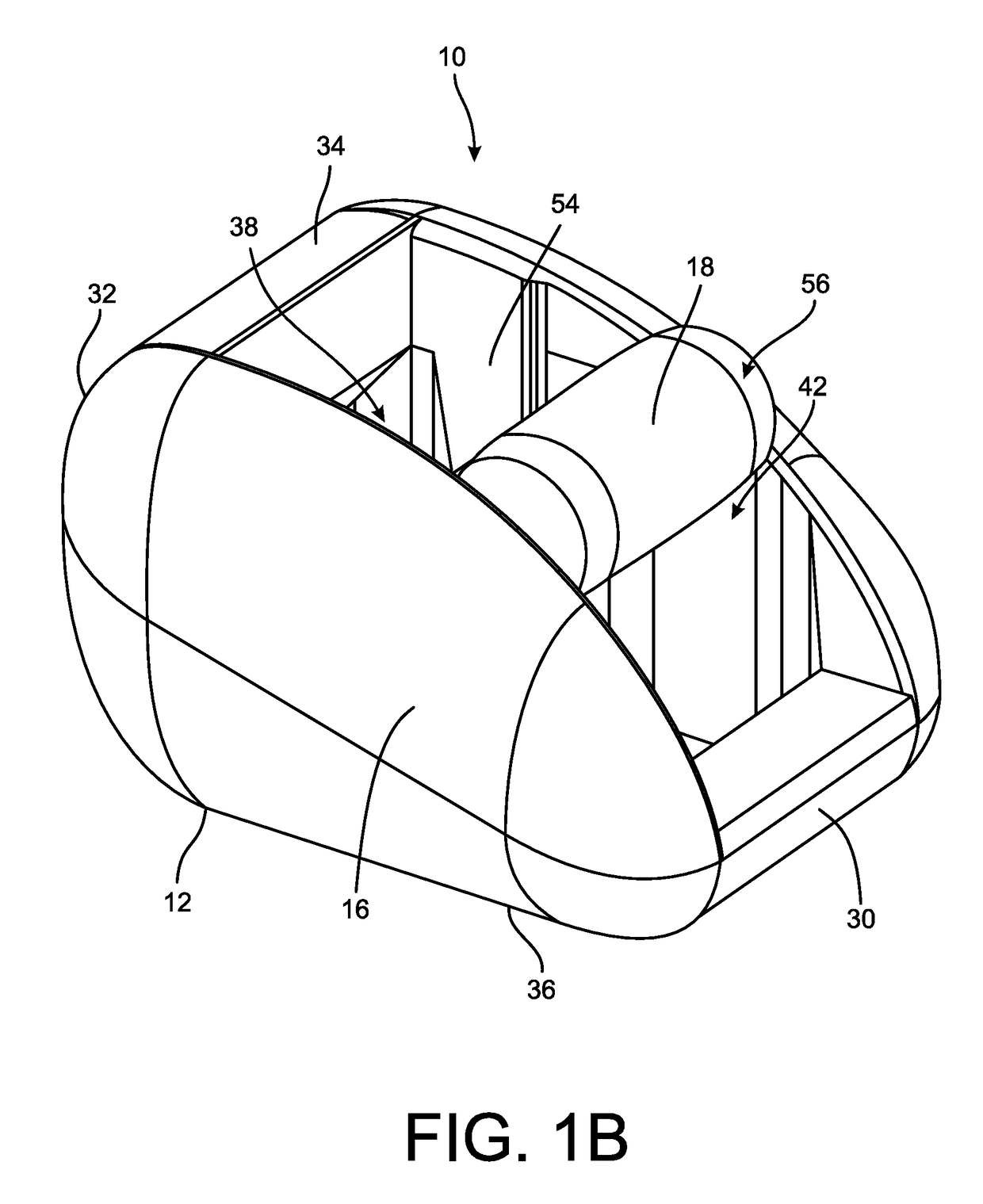Cable lacing tie devices and methods of using the same
a technology of tie-ins and cables, which is applied in the field of tie-ins and devices for holding objects together, can solve the problems of reducing the strength of the strap, increasing the tendency of the strap to tear through, and generally not being able to closely hug irregular or rectangular shapes
- Summary
- Abstract
- Description
- Claims
- Application Information
AI Technical Summary
Benefits of technology
Problems solved by technology
Method used
Image
Examples
Embodiment Construction
[0020]The following description of example methods and apparatus is not intended to limit the scope of the description to the precise form or forms detailed herein. Instead the following description is intended to be illustrative so that others may follow its teachings.
[0021]The present disclosure provides cable lacing tie devices for holding together a plurality of objects, such as objects of similar or different sizes that are to be gathered and held together at one or more predetermined locations, such as points along a group of wires, wiring harnesses, or cables that are gathered together to form a bundle. The disclosed cable lacing tie devices generally comprise a head assembly and a length of cable lacing tape, such as for instance a braided filament element. A first portion, such as a first end of the length of cable lacing tape, may be retained by the head assembly. In one example, the cable lacing tape is routed through, or otherwise connected to or molded within a body of ...
PUM
| Property | Measurement | Unit |
|---|---|---|
| temperatures | aaaaa | aaaaa |
| lengths | aaaaa | aaaaa |
| structures | aaaaa | aaaaa |
Abstract
Description
Claims
Application Information
 Login to View More
Login to View More - R&D
- Intellectual Property
- Life Sciences
- Materials
- Tech Scout
- Unparalleled Data Quality
- Higher Quality Content
- 60% Fewer Hallucinations
Browse by: Latest US Patents, China's latest patents, Technical Efficacy Thesaurus, Application Domain, Technology Topic, Popular Technical Reports.
© 2025 PatSnap. All rights reserved.Legal|Privacy policy|Modern Slavery Act Transparency Statement|Sitemap|About US| Contact US: help@patsnap.com



